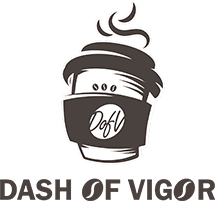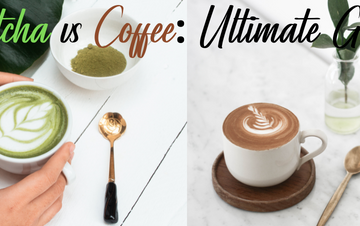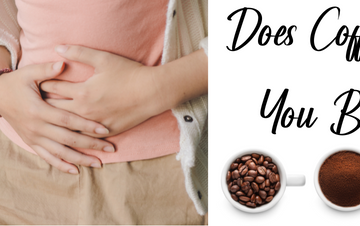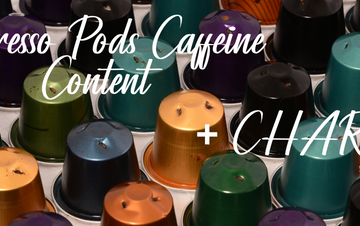Best Water For Coffee: Beginner’s Guide
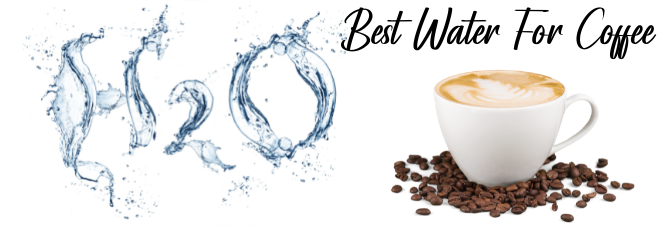
Before I describe the best Water for Coffee in-depth, I want to ask you a few questions.
Do you have trouble tasting the flavor notes in your specialty coffee bean bag? Or maybe you’re just trying to brew a magnificent cup of coffee, but something is constantly off?
If you answered yes, you might overlook the significance of utilizing the best water for your handmade coffee. Whether you use an espresso machine or any other tool, you should know that you will not achieve outstanding results. That is unless you examine the parameters of your water.
I’m not just talking about temperature here. I’m also talking about pH and hardness. Even if you have a single-serve coffee maker, such as a Keurig, the flavor of a cup made with various types of water will fluctuate dramatically.
You can also check the best water for coffee makers. Is soft water always preferable to hard water? Are there any water brands that provide the best product for coffee lovers?
In this beginner-friendly article, I’ll show you the fundamentals that will help you understand how water affects the flavor of your coffee and the durability of your home machine.
So let’s get started!
TABLE OF CONTENTS:
- Quick Review Of What The Best Water For Coffee Is
- The Effects of Water Chemistry on Coffee Extraction
- pH
- Buffering Capacity (Alkalinity)
- General Hardness
- Total Dissolved Solids (TDS)
- What Are The Different Types Of Water And How Can You Know Which One Is Best For Coffee?
- Tap Water
- Filtered Water
- Distilled water
- Reverse Osmosis (RO) Water
- Ion exchange Water
- Bottled Water
- Making the Best Water for Coffe at Home
Quick Review Of What The Best Water For Coffee Is
The finest water for coffee is typically the one that complies with the Specialty Coffee Association’s (SCA) guidelines. It should have a neutral pH and mild hardness, and alkalinity.
These standards are listed in the table below:
| CHARACTERISTICS | TARGET | ACCEPTABLE RANGE |
| Odor | Free | Free |
| Color | Visually Clear | Visually Clear |
| Chlorine | 0 mg/L | 0 mg/L |
| Total Dissolved Solids | 150 mg/L | 75 – 250 mg/L |
| Calcium Hardness | 3-4 gpg* or 51-68 mg/L | 1-5 gpg* or 17-85 mg/L |
| Alkalinity | 40 mg/L | At or near 40 mg/L |
| pH | 7.0 | 6.5 to 7.5 |
| Sodium | 10 mg/L | Less than 30 ml/L |
* grains per gallon (gpg)
The qualities of water listed above are beneficial for coffee brewing, not just because they increase the flavor of your cup.
Note that the water you use in your coffee maker or espresso machine is crucial for your life. Using suitable water will keep them from breaking down as well.
Since there are different types of coffee (beans), the best water for each type will be different. Yes, it is a shock, right? This will make our work a little bit harder.
As a result, it’s reasonable to claim that the best coffee water is the water where we roast the coffee beans. In other words, ask your roaster what water parameters you should strive for. That is in case you want to detect the taste notes mentioned on the bag of your specialty coffee beans. You may even request (or purchase) a bottle of the water used by the roaster or your neighborhood café.
The Effects of Water Chemistry on Coffee Extraction
To fully comprehend how water affects coffee, I must consider it not only as a component. It is also a solvent that is critical in the extraction process.
As a result, I need to mention the most remarkable features that define water chemistry – pH, buffering capacity (alkalinity, KH), general hardness (GH), and total dissolved solids (TDS). Those 4 are commonly used to characterize its chemistry.
Don’t worry if you struggle with chemistry. I will describe everything in layman’s terms so you can understand how water affects our coffee.
pH
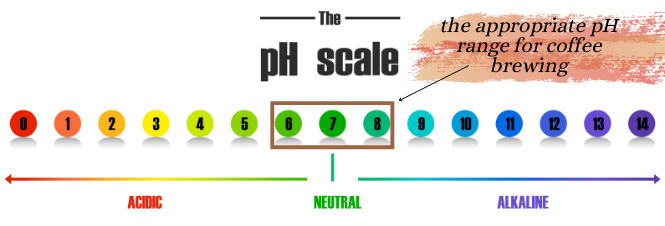
The pH number indicates whether water is a basic, an acid, or neither (neutral). From 0 through 14, there are 14 options. A pH of 7 is neutral, a pH of 7 or higher is basic or alkaline, and a pH of 7 or lower is acidic.
With a pH of 7, the optimal water pH for coffee is neutral. According to the Specialty Coffee Association (SCA), the appropriate pH range for coffee brewing is between 6 and 8. If your waterfalls are outside of this range, you may be unhappy with the outcome of your coffee.
For example, if you make coffee with overly alkaline water (pH above 8), the result will be flat.
With that in mind, if we’re talking about pH in the context of coffee extraction, we’ll need to consider the alkalinity. That is the buffering capacity of the water.
Buffering Capacity (KH, Alkalinity)
Before I continue, I want to clarify two important definitions.
The term “alkaline” refers to a base (e.g., pH > 7). The term “alkalinity” refers to buffering.
When we mix acids or bases with water, the buffering capacity describes the ability of the water to maintain a constant pH.
Bicarbonates and carbonates account for the majority of water’s buffering capability.
Carbonate hardness, buffering capacity, and alkalinity are all phrases that have the same meaning. While the pH indicates the current state of the water, it does not indicate how simple it is to modify its acidity, which is critical when talking about coffee extraction.
When we mix acid and water with high alkalinity, the buffering capacity of the water absorbs and neutralizes the acid, keeping the pH constant.
Coffee is acidic by nature. Because alkalinity buffers the acidity of the coffee during extraction, it helps it tasteless sour. The acids in coffee will become too powerful and destroy the flavor of your brew if the water you use for coffee manufacturing is too low in alkalinity.
As a result, you’ll want your water to have enough buffering capacity.
On the other hand, if the alkalinity of the water is too high, your coffee will be bland and lack subtlety and crispness.
However, water with insufficient alkalinity may cause corrosion in the inside metal parts of your coffee maker or espresso machine. According to the Specialty Coffee Association (SCA), the optimal alkalinity for coffee is around 40 ppm. Alkalinity levels should be between 40 and 70 parts per million. We may use it to calculate carbonate hardness (KH) and general hardness (GH).
General Hardness (GH)

General hardness (GH), sometimes known as total hardness, is the total amount of magnesium (Mg2+) and calcium (Ca2+) ions in the water. Aluminum, manganese, and iron are other ions that contribute to general hardness.
Although, they account for a small portion of it because their concentration in drinking water is often relatively low. The units of measurement for general hardness are parts per million (ppm) or milligrams per liter (mg/l).
| 0 – 70 ppm | Very soft |
| 70 – 140 ppm | Soft |
| 140 – 210 ppm | Medium-hard |
| 210 – 320 ppm | Fairly hard |
| 320 – 530 ppm | Hard |
Water extracts flavor from coffee with calcium (Ca2+) and magnesium (Mg2+). As a result, if your water is too soft, you won’t be able to create a fantastic cup of coffee.
Using too hard water will impede the extraction of flavor components. You’ll wind up with coffee lacking subtlety and sweetness if the harshness is too high. Using too hard water can also lead to a rapid accumulation of limescale. That might harm your espresso or filter coffee equipment. To avoid a malfunction, you’ll have to descale your coffee maker too frequently, which might be a pain. According to SCA requirements, we should make coffee using water with a total hardness of 50 to 175 ppm.
It’s also worth mentioning that magnesium and calcium have varied effects on coffee extraction. Magnesium removes more attractive coffee tastes than calcium, according to some data. Coffee prepared with magnesium-rich water may have a greater caffeine level and more intense flavor than coffee produced with calcium-rich water.
Likewise, magnesium scales are somewhat more soluble compared to calcium scales. As a result, magnesium-rich water, rather than calcium-rich water, may be preferable for your coffee maker and espresso machine. That might help to mitigate the detrimental effects of limescale on your gadget.
Total Dissolved Solids (TDS)
TDS means “total dissolved solids,” which refers to the total concentration of all minerals and inorganic and organic compounds dissolved in water. Parts per million (ppm) or milligrams per liter (mg/l) are the units of measurement.
Coffee is over-extracted when the water has a low TDS level. On the other hand, water with a high TDS level is supposed to under-extract coffee. As a result, the SCA has set a goal TDS of 150 ppm.
Water with a 75 to 250 ppm TDS range is appropriate for coffee. TDS doesn’t reveal anything about the composition of the water you drink. Even if your tap water has a TDS of 150, it doesn’t guarantee it’s suitable for coffee extraction.
You have no idea what’s behind the TDS figure — it may be magnesium and calcium. But it could also be iron or copper, for example. Knowing the GH and KH of the water you use to make coffee is far more helpful than knowing the TDS.
Nonetheless, using a TDS meter is more convenient than meticulously measuring your water’s alkalinity-to-hardness ratio. This sort of equipment is quite beneficial. It can help you identify whether your tap water is suitable for coffee and how your filter pitcher affects the TDS of tap water.
However, we can’t determine if we’re using the finest water for our coffee beans until we know the dissolved solids in our water.
So, if you want good results, I recommend getting a GH and KH test kit.
What Are The Different Types Of Water And How Can You Know Which One Is Best For Coffee?
So the different types of Water are:
- Tap Water
- Filtered Water
- Distilled water
- Reverse Osmosis (RO) Water
- Ion exchange Water
- Bottled Water
Let’s have a look at the basic properties of the many types of water now that you’ve learned a little more about water composition. That will provide you with greater clarity and help you make better decisions on which one to use for coffee. So, let’s identify the various sorts of water and how they interact with coffee.
Tap Water
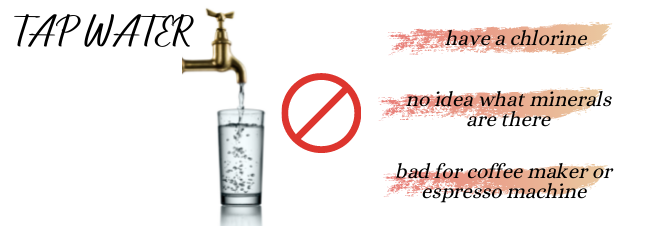
Tap water is okay for coffee preparation if it tastes nice, but is it your preferred option?
All novice coffee drinkers should follow the basic guideline of making coffee using water that tastes fine. The water from your tap can have a chlorine taste, which you should avoid.
According to the SCA, the finest water for brewing coffee should be unscented and chlorine-free. Chlorine destroys parasites, germs, and viruses. It contains tap water by government organizations in charge of water treatment.
When it comes to coffee extraction, hardness, and alkalinity are also crucial. Another problem with using tap water for coffee is that you have no idea what minerals are there. Even though it’s odorless and tastes nice, its hardness or alkalinity may be too high or low to be suitable for coffee brewing.
You may learn more about whether your tap water is acceptable for coffee by visiting the website of your local water authority. They regularly publish their chemical analysis.
Another alternative is a KH and GH test kit or at least a TDS meter. Regrettably, tap water is sometimes very hard. Putting it in your coffee maker or espresso machine might produce a quick mineral buildup.
Filtered Water

We often use carbon filters to remove chlorine from filtered water.
We can use filter pitchers, such as the Brita, to eliminate undesired impurities and odors from tap water. If you want to enhance your coffee brewing, this water filtering method is the simplest and most cost-effective.
Brita filters help to reduce water hardness, but only a little. So, if your tap water is tough, putting it through a filter pitcher might not be enough to soften it.
I investigated and realized that a Brita considerably lowers hardness, but only when it is brand new. When the filter on the pitcher wears out, the pitcher’s softening powers degrade. Furthermore, alkalinity is unaffected by Brita filters.
Nonetheless, filtering your tap water before pouring it into the reservoir is good for your coffee maker. It includes an ion exchanger that converts limescale and heavy metals into magnesium.
Since some sources claim that magnesium enhances extraction and improves coffee flavor, this jug would be better for coffee preparation.
Distilled water
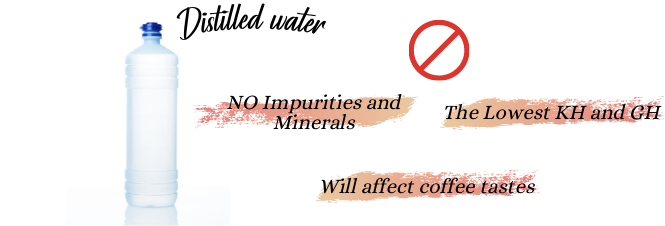
Water distillation involves boiling water, converting it into steam, and then condensing it back into liquid in a separate container. Impurities and minerals with a higher boiling point in the water are left behind.
Coffee distilled water has the lowest KH and GH possible. Such water parameters will affect the extraction of coffee tastes. They may lead to corrosion of the coffee machine’s internal parts, as mentioned in the water chemistry section of this page. As a result, making coffee with distilled water is not a good idea!
Furthermore, many household coffee machines use sensors to detect mineral concentrations in water. If you fill your coffee maker’s water reservoir with distilled water, it may not know it’s intact. You’ll get an error message “No water.” Are you hoping to be able to make a cup?
Reverse Osmosis (RO) Water
Reverse osmosis (RO) is a water purification method that pushes water against a thin semi-permeable membrane that only allows water molecules to pass through. This approach eliminates 90% to 95% of pollutants and minerals from water. As a result, RO water properties are comparable to distilled water. RO purification is less costly and more extensively used than distillation. The nearly pure RO water isn’t appropriate for preparing coffee since reverse osmosis removes the mineral content. Its alkalinity and hardness levels are below what is considered suitable for coffee.
Consequently, if you make your cup of Joe using pure RO water, it will almost certainly come out terrible.
Furthermore, because RO water has a poor buffering capacity, it may produce overly acidic water, which can cause corrosion. As a result, many coffee shops feature reverse-osmosis systems that remineralize the water by reintroducing the proper amounts of magnesium and calcium.
Ion exchange Water
Water travels through a polystyrene resin in ion-exchange water softeners. It regularly draws calcium and releases a sodium ion in its stead. The calcium hardness of the water decreases. The alkalinity, on the other hand, does not change. Don’t worry! The sodium ion in your coffee won’t make it taste salty. This ion exchange will also help to prevent the production of limescale.
Ion-exchange resins can replace bicarbonates with hydroxide, chloride, or sulfate ions. It lowers alkalinity without affecting the water’s hardness or heavy metal concentration.
Water systems with dual ion exchange are also available. They have an impact on both alkalinity and hardness. Although ion exchangers are less costly than RO systems, we must refill them often. That is because as water passes through the resin, it releases salt and/or hydroxide ions, and there will be nothing left to soften the water beyond that point.
Bottled Water
The GH, KH, and TDS levels in various bottled waters vary widely. You can find a list of mineral content on the bottle of a particular branded water (usually described as TDS). If you’re lucky, you might be able to learn more about whether your preferred spring or mineral water is better for coffee brewing.
Unfortunately, many bottled water alternatives have too high or too low GH and buffering capacity, making them unsuitable for preparing coffee.
Another disadvantage of betting bottled water for coffee brewing, whether spring or mineral, is its expense.
Furthermore, it is not the most environmentally friendly alternative available.
Making the Best Water for Coffe at Home
There are alternative options for getting the optimum water for the flavor of your coffee that will not harm your espresso machine or drip coffee maker. Adding the correct amount of minerals to distilled or RO water may give you the optimal KH to GH ratio for coffee brewing. You may achieve this by using mineral packets to produce the ideal water for your home-brewed coffee or espresso.
- These little mineral sticks are simple: dissolve one in a gallon of water, shake, and the water is ready to drink.
- You may increase the alkalinity and hardness of distilled or RO water. That is possible by adding Epsom salt (for magnesium) and baking soda (for buffering capacity/alkalinity). You can bring it within the appropriate range.
Mixing tap water with RO/distilled water is another technique to make your coffee water at home. If your tap water has an unpleasant chlorine odor, use charcoal-filtered tap water (run it through a filter pitcher like the Brita). When you mix RO or distilled water for coffee with tap water, the water’s hardness and alkalinity increase. The trouble is you’ll need to measure the properties of your tap water before deciding on the tap-to-distilled water ratio you’ll employ.
If you’re lucky enough to live in an area where the water from your tap is soft enough (but not too soft), you may enhance the flavor and remove unwanted smells. That can happen by using a charcoal filter (such as a Brita pitcher).
Final Words
I hope you found my tutorial helpful and now know what to look for when attempting to obtain (or produce) the best water for a great cup of coffee.
What type of water do you prefer for your coffee?
